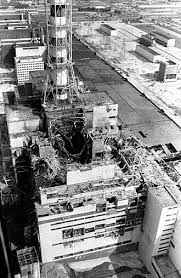
The Importance of Chernobyl
The Chernobyl nuclear disaster, which occurred on April 26, 1986, remains one of the most significant events in the history of nuclear power. The explosion at Reactor No. 4 of the Chernobyl Nuclear Power Plant in Ukraine not only led to immediate fatalities but also released a substantial amount of radioactive particles into the atmosphere, impacting not only the surrounding areas but also reaching as far as Western Europe. Understanding Chernobyl is critical as it highlights the profound implications of nuclear safety regulations and disaster preparedness.
Details of the Incident
The disaster was caused by a sudden power drop during a safety test, which was exacerbated by design flaws in the reactor and operator errors. The reactor’s core was exposed, leading to an explosion that released vast quantities of radiation. Immediate consequences included the death of two plant workers on the night of the accident, followed by 29 emergency responders and plant personnel within days due to acute radiation syndrome. The long-term effects led to thousands of cases of thyroid cancer and other health issues among residents in the contaminated areas.
Aftermath and Response
In the aftermath, over 350,000 people were evacuated from the surrounding areas, and a 30-kilometre exclusion zone was established around the plant. The Soviet government struggled initially to communicate the seriousness of the disaster but eventually worked with international agencies. The creation of the sarcophagus structure around the reactor to contain the radiation was one of the critical responses.
Current Relevance and Lessons Learned
Today, Chernobyl serves as a poignant case study in nuclear safety. It has prompted reforms in global nuclear policies and spurred international cooperation on nuclear safety standards. Documentaries, films, and literature continue to explore the events and aftermath of Chernobyl. The site has also become a point of interest for tourism, drawing visitors keen to understand the disaster and witness the site. Moreover, ongoing efforts toward the construction of the New Safe Confinement shelter highlight the continued need for monitoring and management of radioactive materials.
Conclusion
The legacy of Chernobyl reverberates through discussions on nuclear energy and safety. As countries consider their energy futures, the lessons learned from this catastrophe remain crucial. It serves as a reminder of the responsibilities that come with nuclear technology and the perils of neglecting safety protocols. For readers, the story of Chernobyl is not just a historical event; it is a call to advocate for transparent safety measures in nuclear energy and a testament to the resilience of communities affected by industrial disasters.
You may also like

The Cultural and Historical Significance of Poppies

The Significance of 5th November: History and Celebrations
